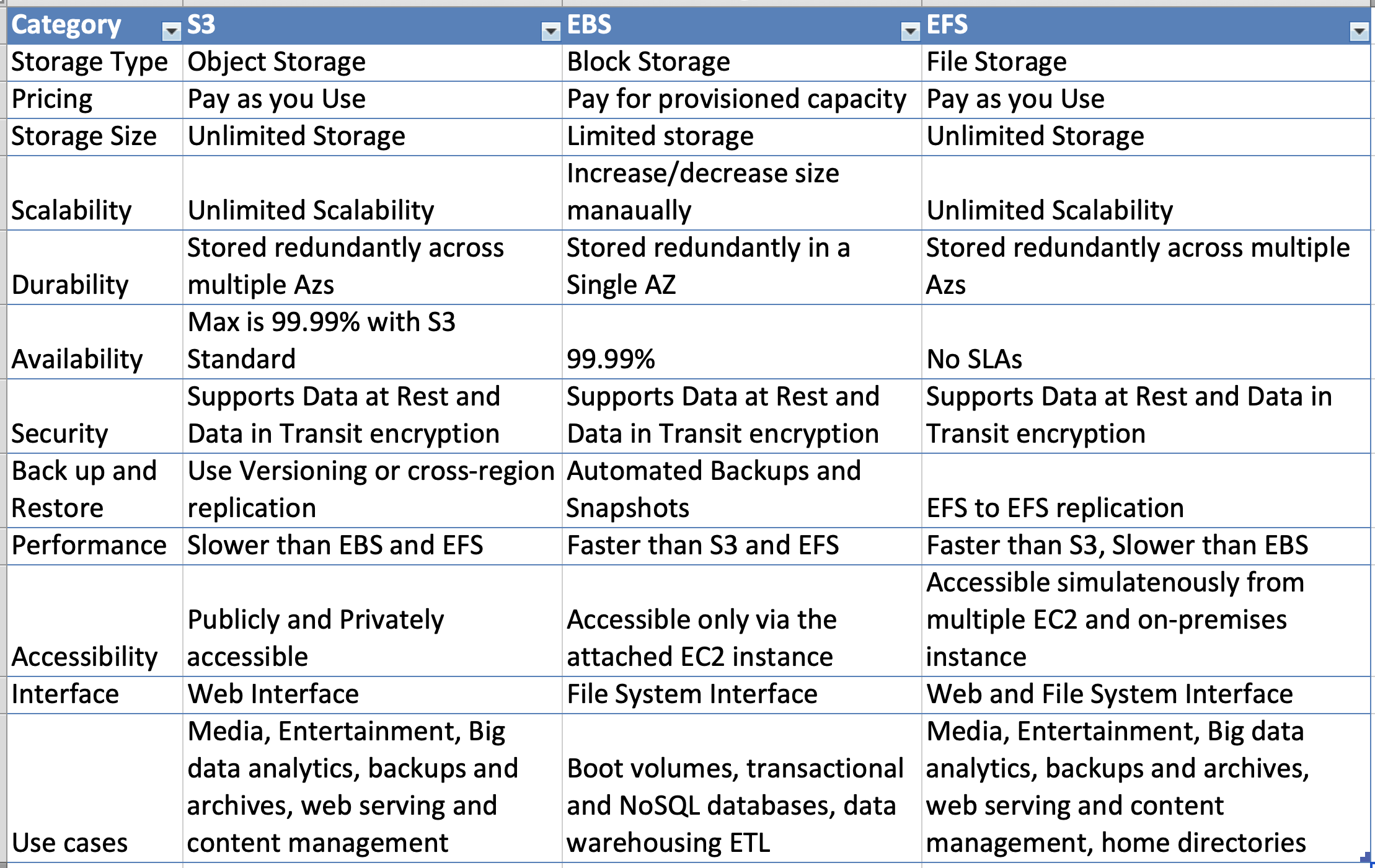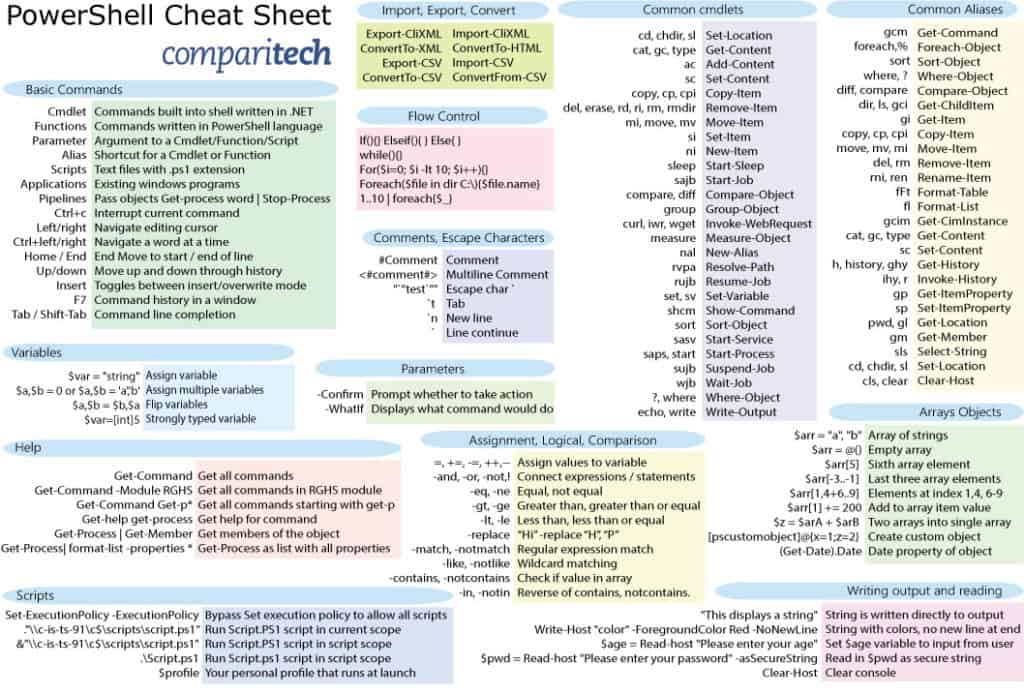
Below is the cheat sheet of AWS CLI commands for EC2.
- Aws Cli Commands Cheat Sheet Download
- Aws Cli Command Reference
- Aws Cli Commands Cheat Sheet
- How To Use Aws Cli
- Aws Cli Commands Pdf
- Aws Cli Commands Cheat Sheet Free
- Aws Cli Commands Cheat Sheet Printable
If you are new to EC2, it’s recommended that you go through this free AWS EC2 crash course.

For more information see the AWS CLI version 2 installation instructions and migration guide. AWS CLI Command Reference ¶ The AWS Command Line Interface is a unified tool that provides a consistent interface for interacting with all parts of AWS. A place to quickly lookup commands ( bash, Vim, git, AWS, Docker, Terraform, Ansible, kubectl) Bash; Vim; Git (Includes Pull Request and Forked Repo Syncing steps) AWS; Docker; Terraform; Ansible; Kubernetes (Includes steps for running a simple container) Hacking tool cheat sheet from compass security; A Cloud Guru K8s Cheat Sheet; Simple setup for a COBRA CLI. This cheat sheet will help you perform basic query operations, table manipulations and item updates with DynamoDB and AWS CLI. If you're looking for similar cheat sheet but for Python, you can find it here, and for Node.js - here. You can use the AWS Console or AWS CLI and the ‘ put-file’ command to add a file or submit changes to a file in a CodeCommit repository. Pull Requests Pull requests require two branches: a source branch that contains the code you want reviewed, and a destination branch, where you merge the reviewed code. You can perform recursive uploads and downloads of multiple files in a single folder-level command. The AWS CLI will run these transfers in parallel for increased performance. $ aws s3 cp myfolder s3://mybucket/myfolder -recursive. Upload: myfolder/file1.txt to s3://mybucket/myfolder/file1.txt.
Aws Cli Commands Cheat Sheet Download
If you want to know how to install AWS CLI please follow steps on this post
Aws Cli Command Reference
Get help
Create instance EC2 Classic
Create instance in VPC
Start instance
Stop instance

Reboot instance
Terminate instance
View console output
Describe Instance
Create an AMI
List images(AMIs)
Aws Cli Commands Cheat Sheet
List security groups
Create security group
Get details of security group
Delete Security group
List key pairs
Create keypair
Import keypair
 Delete keypair
Delete keypairCheck the networking attribute
Add tags to instance
Add EBS volume
List EBS volumes
Check snapshot associated with EBS volume
Note:- All the above commands are taken from different AWS EC2 CLI reference guides and put in one place over here. Please run the commands after due diligence as we won’t be responsible for any mistakes in executing the commands and it’s consequences. If you have any concern or query feel free to contact us.

How To Use Aws Cli
Macbook pro 13 2010. At the middle of 2010`s cloud infrastructure became necessity for software infrastructure. There is a huge trend to move a hardware maintenance from local datacenters to the cloud.
The most famous cloud infrastructure vendor is Amazon Web Services (AWS). We can talk about their benefits and shortcomings many hours in a row, but it’s not a subject here. Amazon provides a CLI interface for infrastructure and special services management. Choice of commands is really large. It allows to control your environment faster and make some processes automated. But it’s easy to confuse at this ocean of tools. For better productivity I would recommend to use a saws – your personal guidebook in AWS. But anyway we might get stuck at what does the each command of these stand for. Also there are plenty of customized flags helping to filter output or skip useless files to copy.
Aws Cli Commands Pdf
To struggle with “amazoned” disorder in my mind, I started to lead a new personal cheatsheet. Here I’ll add one command by one I mostly use in my AWS administration. You’re welcome to suggest any useful commands too in comments below.
Aws Cli Commands Cheat Sheet Free
Note: I’m starting each command with aws prefix to throw out any misunderstanding. Because when you’ll skip this keyword in your command – you’ll get nothing. Also I’m skipping commands from special EC2 CLI or some tools like this one. There is no big difference between these commands.
Aws Cli Commands Cheat Sheet Printable
EC2 | |
| aws ec2 describe–instances | Get full list of EC2 instances |
| aws ec2 create-tags –resources i-a1111111 –tags Key=Environment,Value=development | Assign single tag for special EC2 instance |
| aws ec2 describe-tags –filters “Name=resource-id,Values=i-a1111111” | Get tags list per special EC2 instance |
| aws ec2 run-instances –image-id ami-11111111 –key-name mykey –count 1 –instance-type t2.micro –subnet-id subnet-11111111 –security-group-ids sg-111111 | Launch new EC2 instance |
| aws ec2 create-image –instance-id i-c2d76c07 –name “admin.dev.ticksa.com” | Create new AMI image from existing EC2 instance |
| aws ec2 attach-volume –volume-id vol-1d5cc8cc –instance-id i-dddddd70 –device /dev/sdh | Attach volume to EC2 instance |
| aws ec2 modify-instance-attribute –instance-id i-44a44ac3 –instance-type “{”Value”: ”m1.small”}” | Change the class of stopped EC2 instance |
| aws ec2 modify-instance-attribute –instance-id i-44a44ac3 –disable-api-termination | Enable instance termination protection |
S3 | |
| aws s3 ls mybucket | Simple S3 bucket content listing |
| aws s3api head-object –bucket mybucket –key myfile | Get the full information of file located in S3 |
IAM | |
| aws iam list-server-certificates | Get SSL certificates list |
